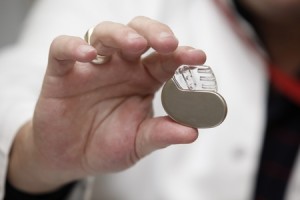 Pacemakers serve many very important purposes in the cardiovascular health of at-risk patients, but new data indicates that the implantation of a pacemaker may not be the best choice in every potential situation.
Pacemakers serve many very important purposes in the cardiovascular health of at-risk patients, but new data indicates that the implantation of a pacemaker may not be the best choice in every potential situation.
Pacemaker Facts
Many patients have a condition called an arrhythmia, which is defined by the heart beating too fast, too slow, or irregularly. An arrhythmia is dangerous because it might prevent the heart from pumping enough blood to the body, and a lack of healthy, oxygenated blood will cause fatigue, shortness of breath, or even fainting. Left untreated for too long, arrhythmia can even threaten the body’s vital organs and cause loss of consciousness or death. This is why the pacemaker was invented.
A pacemaker is a small device placed in the chest or abdomen of a person with an arrhythmia. It utilizes electrical pulses to prompt the heart to beat normally and at a healthy pace. Every pacemaker is designed to continue working for many, many years, and can help a patient live a more active lifestyle.
Pacemakers Following TAVR May Be Dangerous
Data was recently collected following patients who were implanted with a pacemaker after undergoing a TAVR, a transcatheter aortic valve replacement. A TAVR is a minimally invasive yet critical surgery that uses a catheter to repair a damaged valve. However, instead of removing the damaged valve, the replacement valve is wedged into the aortic valve’s place. TAVR is a relatively new cardiovascular health procedure that is FDA-approved for patients with aortic stenosis.
However, researchers recently gathered data on 9,785 patients who underwent TAVR for severe aortic stenosis at 229 different medical locations between 2011 and 2014, and their findings indicate that the use of a pacemaker after a TAVR isn’t the best choice.
According to the data, patients implanted with a pacemaker after their TAVR had a 31 percent higher one-year mortality rate than the patients who did not receive a pacemaker. Though there are many factors to consider, including the previous health condition of those who received the pacemaker, the researchers feel it is important moving forward to develop “interventions to curtail the need for [pacemaker] placement, as well as further studies to confirm or refute its association with adverse outcomes reported in this study.”

 Patient Login
Patient Login